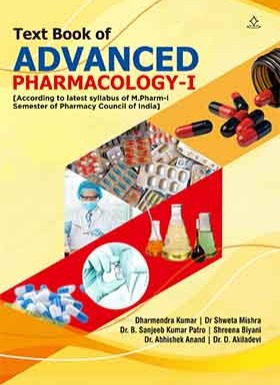


ISBN : 978-93-6087-967-9
Category : Academic
Catalogue : Medical And Nursing
ID : SB21288
TEXT BOOK OF PATHOPHYSIOLOGY
NA
Dr. Rajesh Ramesh Patil, Sazedur Rahman Akanda, Ravindra Goswami, Ms. Ritu Sharma, Ms. Yadav Suman Omprakash,
Paperback
899.00
e Book
299.00
Pages : 282
Language : English
About Book
The "Text Book of Pharmacognosy and Phytochemistry - I" provides an extensive overview of the study of medicines derived from natural sources. It begins with the fundamentals of pharmacognosy, including its history, scope, and sources of drugs from plants, animals, marine environments, and tissue cultures. The book classifies drugs based on alphabetical, morphological, chemical, pharmacological, and taxonomical methods, offering insights into how they are organized and unorganized, such as dried extracts, gums, mucilages, and oleoresins. It also addresses the adulteration of crude drugs, with detailed classifications and examples. Furthermore, the book emphasizes the evaluation of crude drugs using organoleptic, microscopic, physical, chemical, and biological methods, including advanced techniques like quantitative microscopy. Another crucial topic covered is the cultivation, collection, and storage of medicinal plants, discussing factors like plant hormones, polyploidy, mutation, and hybridization. The role of plant tissue culture, its development, and applications, such as edible vaccines, is thoroughly explored. The book also examines the integration of pharmacognosy in various traditional and allopathic medical systems, including Ayurveda, Unani, Siddha, Homeopathy, and Chinese medicine. Secondary metabolites like alkaloids, glycosides, flavonoids, tannins, volatile oils, and resins are studied in-depth, focusing on their properties and identification. The text also touches upon fibers, hallucinogens, teratogens, natural allergens, and primary metabolites like carbohydrates, proteins, enzymes, and lipids, providing insights into their sources, preparation, and therapeutic uses. Additionally, the potential of marine drugs is explored, making this textbook an essential resource for students and researchers of pharmacognosy and phytochemistry.
Customer Reviews






